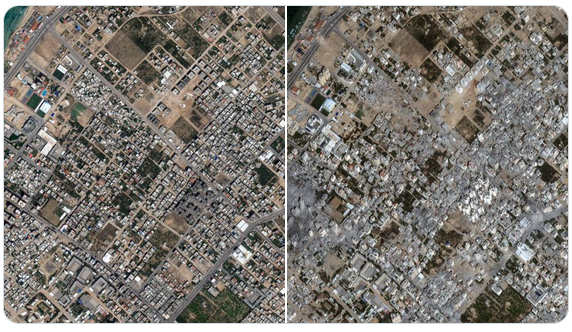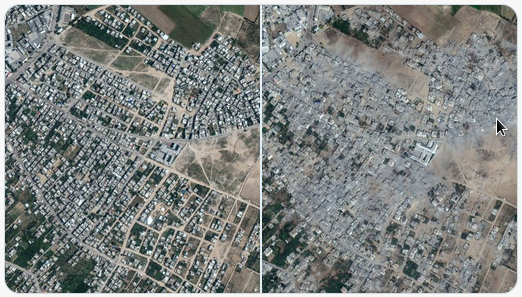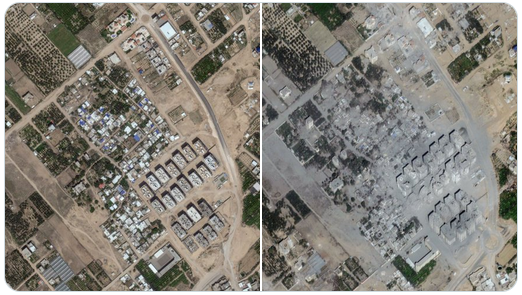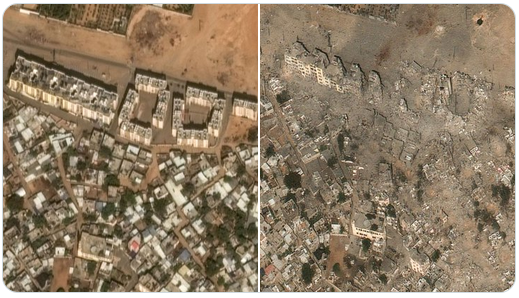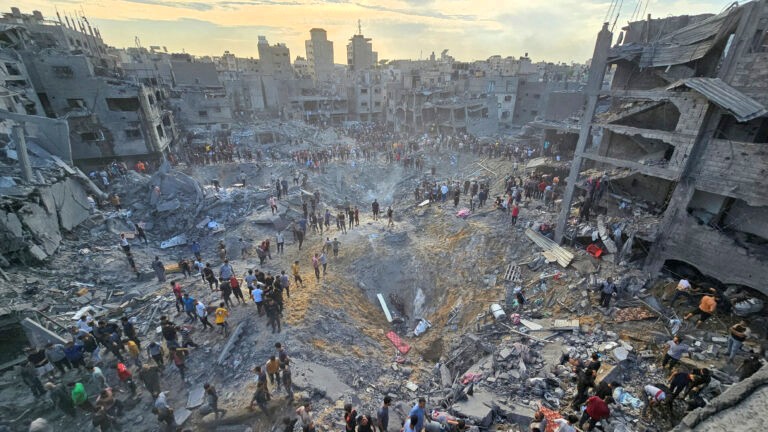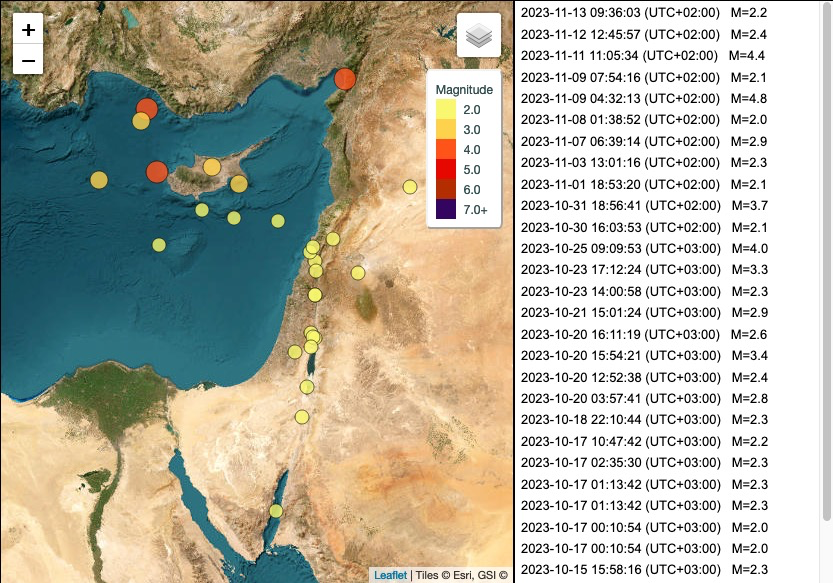When watching news about earthquakes, I think most people are used to hear about the Richter scale, a logarithmic scale used to measure earthquake intensity. A very strong earthquake, like the 2011 one leading to the Fukushima meltdown, happens about a couple times per century, and ranks over 9.0 in this scale. Small ones happen all the time. For example, here in Brazil we had one recorded a few days ago, at 2023-11-05 in Bahia state, ranking 2.7 in this scale.
A less know fact is that we can calculate an energy equivalent for an earthquake, from its Richter magnitude. Wolframalpha gives us the following formula to calculate it:
$$ E = 10^{1.5M + 4.8} $$
Where E is energy, in joules, and M the Richter magnitude.
Using this formula I wrote a small Python script to calculate energies over the scale, but in tons of TNT equivalent, a unit typically used to describe the energy released in explosions, together with its multiples (kiloton = 1000 tons, megaton = 1,000,000 tons, et cetera):
ton = 4.184e9 #One ton of TNT corresponds to 4.184 billion joules
for i in range(2, 20):
print('Richter',
(richter_magnitude := i/2),
'~=',
round(pow(10, 1.5*richter_magnitude + 4.8)/ton, 3),
'tons of TNT.')
Running it I got these results:
Richter 1.0 ~= 0.0 tons of TNT.
Richter 1.5 ~= 0.003 tons of TNT.
Richter 2.0 ~= 0.015 tons of TNT.
Richter 2.5 ~= 0.085 tons of TNT.
Richter 3.0 ~= 0.477 tons of TNT.
Richter 3.5 ~= 2.682 tons of TNT.
Richter 4.0 ~= 15.08 tons of TNT.
Richter 4.5 ~= 84.802 tons of TNT.
Richter 5.0 ~= 476.879 tons of TNT.
Richter 5.5 ~= 2681.688 tons of TNT.
Richter 6.0 ~= 15080.242 tons of TNT.
Richter 6.5 ~= 84802.435 tons of TNT.
Richter 7.0 ~= 476879.138 tons of TNT.
Richter 7.5 ~= 2681688.466 tons of TNT.
Richter 8.0 ~= 15080242.459 tons of TNT.
Richter 8.5 ~= 84802435.285 tons of TNT.
Richter 9.0 ~= 476879138.377 tons of TNT.
Richter 9.5 ~= 2681688466.305 tons of TNT.
With this data now we can compare earthquakes to explosive power. For example, the nuclear weapon used to level Hiroshima released an estimated energy (yield) of 15,000 tons (15 kilotons). In the table we see this is roughly the energy of an earthquake of 6.0 Richter magnitude. The first hydrogen bomb ever detonated in the Castle Bravo test had an estimated yield a thousand times higher, 15 megatons, worth close to a magnitude 8.0 in our table. In a answer I gave previously to a question in the physics stackexchange, I estimated the implosion energy of the failed Titan submersible expedition at roughly 30kg TNT equivalent, or 0.03 tons, corresponding to a small quake between 2.0 and 2.5 magnitude.
Now, for the last weeks I'm following the harrowing news and social media posts documenting the ongoing Gaza Strip siege. Amidst all the human suffering there, one thing that impressed me was the degree of buildings destruction by air raids and shelling, with imagery reminiscent of post-apocalyptic movies, or historical photos from World War II, as shown in those before and after satellite images (source):
A new analysis by two United States-based researchers, Jamon Van Den Hoek and Corey Scher, and Al Jazeera’s AJ Labs unit showed that overall at least 16 percent of all buildings in the Gaza Strip have been destroyed. In Gaza City alone, the building destruction reached at least 28 percent.
According to the latest data from the United Nations Office for the Coordination of Humanitarian Affairs (OCHA), the World Health Organization (WHO) and the Palestinian government, and as of November 7, Israeli attacks have damaged at least 222,000 residential units, with more than 40,000 completely destroyed. (source)
Despite no nuclear weapons being used so far, the sheer amount of conventional chemical explosives already dropped there is impressive. As of November 9, 2023:
According to the Euro-Med Human Rights Monitor, Israel has dropped more than 25,000 tonnes of explosives on the Gaza Strip since October 7, equivalent to two nuclear bombs.
In comparison, the Little Boy nuclear bomb dropped by the United States on Hiroshima during World War II yielded 15,000 tonnes of high explosives and destroyed everything within a one-mile (1.6km) radius. (source)
Some of the individual bombs used are quite large, leaving craters over 10 meters wide, as shown in this photo of the aftermath of an air raid in the Jabalia refugee camp (source):
But a visual analysis by the Guardian has identified at least five craters in the densely populated refugee camp, which weapons experts said were left by the use of multiple JDAMs – joint direct attack munitions – in the airstrike.
Marc Garlasco, a former Pentagon chief of high value targeting during the Iraq war in 2003, told the Guardian the biggest crater at the site looked like a hit with a GBU-31. “There are other bombs it could be. That one just fits best with all the evidence. The estimated crater is around 40ft [12 metres].”
Chris Cobb-Smith, a former United Nations weapons inspector, said: “The munition is almost certainly JDAM, either a GBU 31 (Warhead Mark 84) general purpose bomb or possibly a GBU 56 (Warhead BLU 109) bunker buster. Both about 2,000lb [900kg].” (source)
So, with individual bombs containing from at least a hundred of kilograms of explosives, up to a ton, I think we should expect resulting tremors from air raids ranging approximately from 2.0 up to 3.5 in the Richter scale, according to our table.
So I ask, are seismometers over the world able to record the small earthquakes generated by these explosions? Is their sensibility enough to count or pinpoint individual strikes, or at least to record the noise? Another thing I wonder is if all this noise interfere with real earthquake detection.
